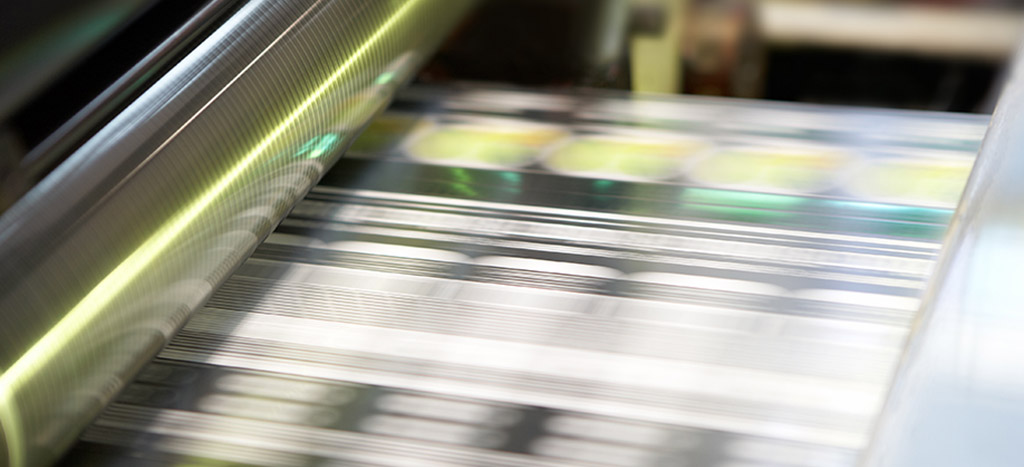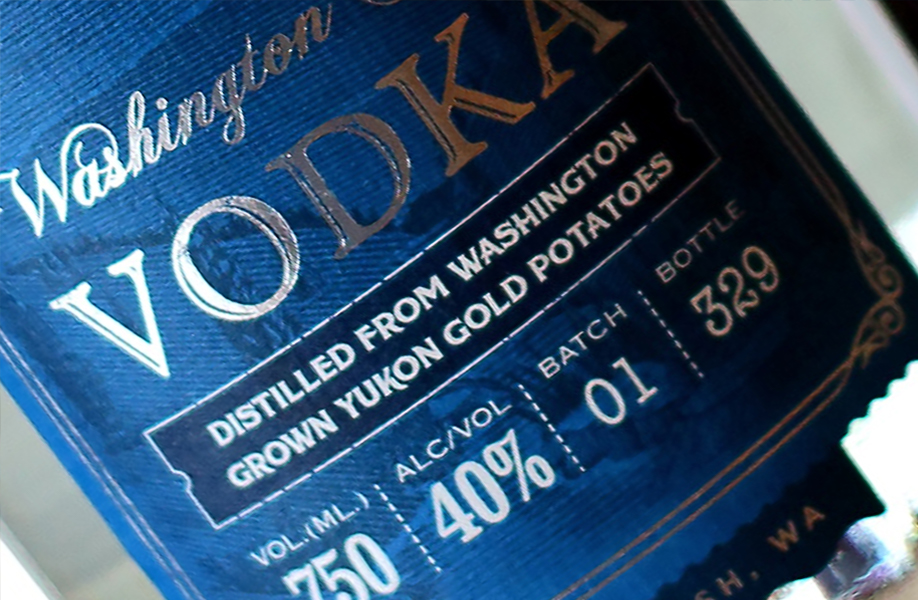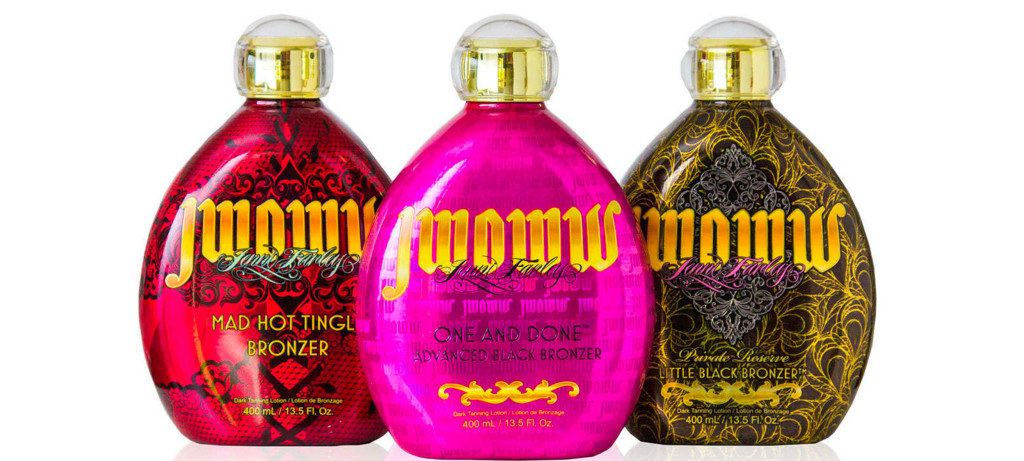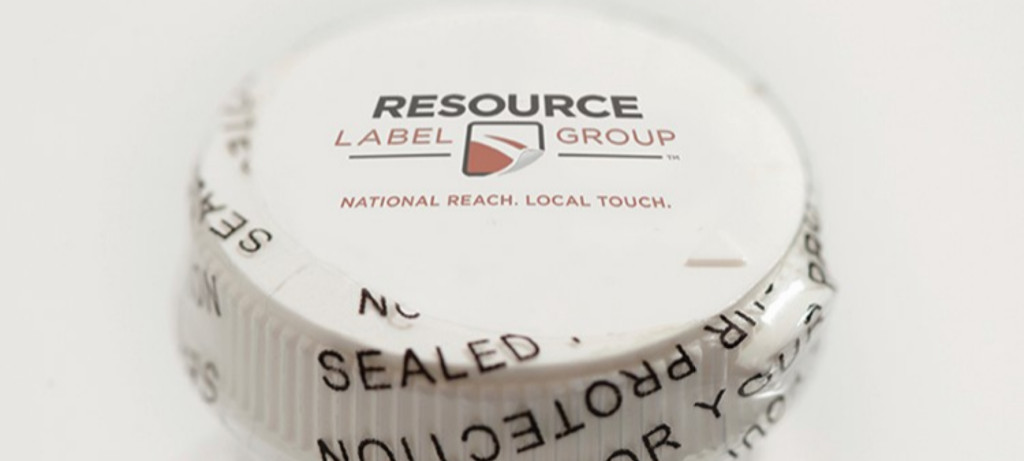Keep your label supplier in the loop when developing packaging

If your brand is setting out to develop, update or refresh your packaging, or search for new packaging suppliers, you’re probably not doing it for sport.
You likely have a very clear objective in mind:
- Reducing packaging costs
- Moving toward more sustainable packaging
- Enhancing shelf presence, launching a new product or rebranding an existing one
- Heightening product security and safety
To accomplish any of the above, you’ll need to work with many packaging suppliers. The supplier for your container, the supplier for your cap, the supplier for your secondary packaging, and on and on.
But one packaging supplier often gets looped in only at the last minute: Your product label supplier.
Depending on your packaging objective, leaving your label supplier out of the conversation until later on in the process can have any number of unintended, but negative, consequences ranging from lost promotional opportunities to wasted time, material and money.
In this article, we’ll walk through each of these overarching packaging objectives, and show exactly how early conversations with your label supplier can help pave a clearer path to achieving them.
If reducing labeling costs is your objective …
There are two ways to look at packaging costs:
- Price: “How much is this costing my brand?”
- Value: “Does paying a little more offer value to my brand in any way? Sales uplift? Reduced risk in my supply chain? Increased product differentiation on the shelf?”
Cost reductions are important, especially to procurement folks, but they don’t exist in a vacuum. Switching to a cheaper material could cheapen your brand or lead to performance problems for your labels. Partnering with the cheapest supplier could reduce costs in the short term, but contribute to delivery, quality and supply problems throughout the duration of your relationship.
Looping all packaging suppliers — including your label converter — in at the beginning of a cost-reduction initiative helps you balance price with value, ensuring you get the biggest bang for your buck with your packaging spend.
Here are some of the questions your label supplier might ask to help your brand cut labeling costs without sacrificing quality:
- Would your brand be better served by digital or flexographic printing? Flexographic printing offers the greatest value for large runs of the same label graphics, but your brand will need to make an initial investment in making plates. For small-to-midsized label runs, digital printing presents the best value, with no plates required and the possibility of label-by-label variation for promotional campaigns, or for product lines with many flavors or varieties. To learn more about the promotional labeling opportunities for your brand, check out this guide.
- Is there an opportunity to standardize label sizes across SKUs? Standardizing label sizes across product lines, or at least flavor varieties within each product line, presents a great cost-saving opportunity. Variable data printing (VDP) with digital presses allows you to vary the graphics of every label in a run. Theoretically, you could combine all your labels for all your products into one order if they were all the same size. And the first rule of labeling costs is that, as the order size goes up, the per-label cost goes down.
- Is there an opportunity to consolidate label suppliers? If your brand has recently grown, or acquired other companies, it might be time to consolidate label suppliers. Say, for example, your company has a portfolio of three brands and each of those brands has two label suppliers. You could put your entire label spend out to bid, leveraging your increased size to obtain more preferable pricing with one label supplier. And in this scenario, you’d only have to manage one vendor relationship instead of juggling six.
- Can you forecast your label needs throughout the year? If so, you may be able to work with your label supplier to establish a vendor-managed inventory (VMI) program to reduce inventory costs and strategically eliminate risk in your label supply.
- Let’s take a closer look at your label size. There might be an opportunity to optimize your label size for the width of the press. Say your label is 4 x 5 inches. If it’s run on a digital press, you can print two on the press at a time. By cutting a quarter-inch off the width of the label — down to 3.75 x 5 inches — you could run three labels on the press at once. This can not only result in cost savings, but it can also reduce your carbon footprint by printing more labels with less material.
If moving toward more sustainable packaging is your objective …
No matter what your sustainable packaging mission is, you need to be thinking about your entire package holistically and understand the entire range of packaging material and construction options at your fingertips.
The best way to do that is to loop in all your packaging suppliers early on.
Once your suppliers understand your vision — whether it’s source reduction, recyclability, compostability or any other sustainability benefit — they can walk you through your options. And if you include every supplier in the discussion, they point you toward the component solution (bottle, cap, secondary packaging, label) that fits best into your entire packaging system.
Here are some of the questions your label supplier might ask to help you land on the right sustainable label solution for your brand’s goals:
- What sustainability story are you trying to tell with your packaging? You have a choice between recyclable, recycled, lightweight, responsible sourced or compostable label materials. We’ll draw on our extensive knowledge of the materials on the market to help you select the one best aligned with your brand’s sustainability mission.
- Talk to us about the rest of your packaging components. If all of your packaging components — your container, your lid, the secondary packaging — are recyclable in municipal facilities, but your label isn’t, it sends a conflicting message to consumers about your commitment to sustainability. By analyzing your packaging system holistically, we’ll spot opportunities to align the sustainability benefits of your label with the rest of the components in your packaging, weaving a cohesive sustainability story for your brand.
- What geographic markets do you sell your product in? Geography is key when it comes to end-of-life disposal of recyclable and compostable packaging. Let’s say your package is compostable. Typically, compostable packaging materials are designed to biodegrade under the specific conditions in industrial composting facilities — not home compost piles. And very few municipalities in the U.S. currently have curbside pickup for compost. If curbside pickup isn’t available where you sell your product, compostable packaging might not make the most sense.
If enhancing your product’s shelf presence, rebranding or launching a new product is your objective …

This is an excellent opportunity to invent — or reinvent — your brand. And truly outside-the-box packaging concepts take time to plan, engineer and produce.
Chances are, you have an idea of what you’d like your label to look like at the outset of the packaging development process. Give your label supplier time to offer material selection advice, recommend embellishments or even suggest overall packaging improvements (e.g., adding a neck label, tamper-evident solution, shrink sleeve, etc.).
Without time to plan properly, you are setting your packaging development project up for failure in the form of missed promotional opportunities, wasted material, longer time-to-market or lackluster shelf presence.
Here are some of the questions your label supplier might ask to help your brand get the most out of the packaging development process:
- What’s your packaging vision? Ultimately, anything is possible with product labels. Every conversation about enhancing shelf presence begins with your vision. Only once we understand that vision will we begin to walk you through how to bring it to life.
- Let’s walk through your embellishment and customization options. Want to highlight your logo with foil stamping? We can do that. Want embossing, tactile varnishes or a custom shape? We can do that. Have a clear liquid product and want a double-sided back label to create a viewfinder effect for your product? We can do that. Whatever your vision, we can bring it to life with our full portfolio of label printing capabilities.
- What, exactly, are your color expectations? Label suppliers know how important color consistency is for brands — and once they understand your specific expectations, they’ll put in the work during pre-press to ensure your labels look identical order after order.
- Can we forecast your potential label needs for the upcoming year? If you can, there’s plenty of opportunity to reduce the overall costs of your product labels by placing one big order for the needs of your entire year.
- What’s your promotional plan for the upcoming year? Using the VDP capabilities of digital presses, you can print different promotional versions of your label in one run. For example, we could print your new-release version (“New look, same great taste!”), your standard version and holiday promotional version in a single run. And when run size goes up, per-label cost goes down. For more inspiration on promotions you could run for your product, check out this article.
- Are you switching label application methods? We’ll ask questions about the machine applying your label and construct the labels in such a way that prevents application problems by design.
- Are you changing your container? Your label needs to be compatible with your container material, as well as its size and shape. If you’re switching containers, you might need to switch to a substrate/adhesive combination compatible with the container surface or update the size or die cut of your label.
- If it’s a rebrand, are you doing it all at once or in stages? Do we need to keep printing a smaller number of your original labels while you phase in the rebrand?
If heightened product security and safety is your objective …
Labels can play an important role in protecting your products from tampering and counterfeiting, as well as providing supply chain traceability. This not only aids in compliance and protects your consumers by ensuring they receive your product exactly the way it left your facility — but it also protects your brand from losing consumer trust.
Here are some of the questions your labels supplier might ask if your goal is to enhance the product security and safety of your packaging:
- Are you federally mandated to track & trace all product components throughout your supply chain? Traceability is essential to federal compliance in the pharmaceutical industry, and important for reducing liability in other industries. If you require traceability, we’ll sit down with you and verify the quality and compliance information you require. Then we’ll collect that information, document it in our enterprise resource planning (ERP) system and submit your customized reports with every purchase order.
- Do you need to incorporate a tamper-evident packaging element to enhance product safety? Tamper-evident label solutions — such as shrink-film seals around your cap or pressure-sensitive labels that form a seal — will help ensure the product reaches your consumer the same way it left your facility.
- Will you be printing batch and lot numbers on the label? If so, you’ll need an imprintable varnish or laminate that will allow for secondary printing at your facility with a thermal transfer printer.
- Is counterfeiting a concern? It is for many brands. In fact, counterfeiting is expected to be a $1.82 trillion — that’s trillion with a ‘t’ — business this year, according to The Global Brand Counterfeiting Report. A general rule of thumb is that the more complex your label is, the harder it will be to replicate successfully. That said, you can also incorporate a host of covert security features that further prevent counterfeiting. Micro text, digital watermarks, guilloches or secure QR codes are a few security features possible with digital presses.
- Do you need warehouses, retail locations or end users to be able to easily verify the authenticity of your products? This allows your brand to identify and intercept any counterfeit goods that infiltrate your supply chain at any of these checkpoints before they reach the consumer — protecting both your consumers and your brand. QR codes and smart labels allow for immediate, item-level authentication by warehouse personnel, retail workers and consumers. We’ll walk you through your options and land on the best drop-in authentication solution for your product’s journey through the supply chain.
How can we help you meet your packaging objective?
Let’s start the conversation today. We’ll offer label advice, guidance and recommendations that will pave a clear path toward meeting your goal.
Find the best solution that makes the most sense for your brand.
Tags:


